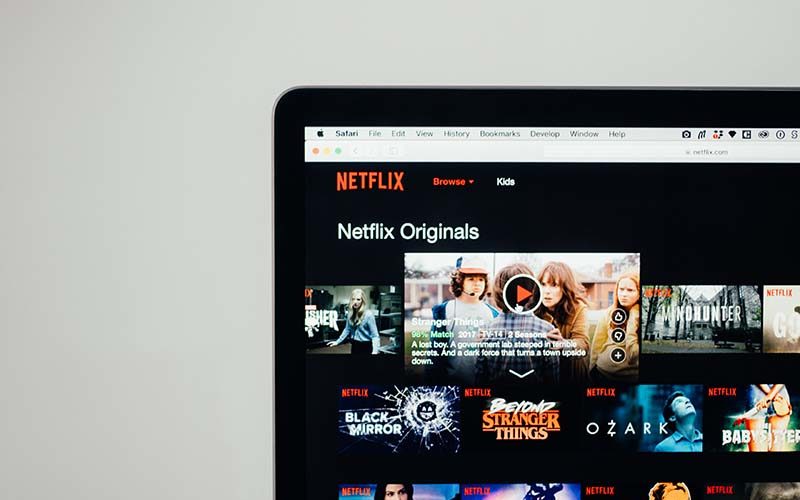How long would it take you to listen to 1.5 million songs on Spotify? Or post 350,000 tweets on Twitter? Or take 210,000 snaps on Snapchat? If you’re trying to run the numbers, just stop.
All that – and much, much more – happened every 60 seconds in 2017.
For the second year in a row, Statista charted the online activities of our digital lives and released the results in what they call a Digital Economy Compass. Their infographic (at right) shows just a few of the online things millions of connected people did each and every minute of the year. In addition to the stats listed above, other activities included:
- 87,000 hours of television content watched on Netflix…every 60 seconds.
- 65,000 pics uploaded via Instagram…every 60 seconds.
- 29 million text messages processed…every 60 seconds.
- 243,000 photos posted to Facebook…every 60 seconds.
Granted, that’s global online activity – not just one country, or just one age bracket – but young Americans are certainly leaving a digital footprint of their own. Want proof that our kids are logging their share of minutes in the digital world? More and more school teachers are saying “Excuse me, may I have your attention?” because of the constant distractions caused by smartphones in their classrooms. And online videos are so popular, kids can’t help but hit play when it comes to YouTube, Amazon Video, Hulu, etc.
Meanwhile, many are wondering what impact all those online minutes are having on teens. Here are just a few answers:
Some have noticed a connection between social media use and depression in teens. We’ve known for a while that smartphone use has been stealing sleep from young people. There are definitely questionable elements being imported through the music they stream. It’s easy to see the potential dangers associated with irresponsible messaging (nude snaps or texting while driving). And as we wrote in a recent article, porn is ridiculously easy for kids to find online. Others have even noted that children entering their school years are sometimes unable to properly hold a pencil because the hand/finger coordination needed for that task hasn’t been developed because little kids have been swiping a screen instead of coloring/drawing.
Of course, the digital world in which our kids live affords marvelous benefits, as well. Today’s teenagers are growing up in an age of information that allows for collaboration and learning that was unimaginable just 30 years ago. Family and friends can be connected in real time across great distances. And entertainment of various kinds is literally at our fingertips.
Making Every Minute Count
So, how do we help our kids make the most of their minutes spent online? Are there ways to take advantage of the benefits while steering clear of the pitfalls? Yes…and it’s relatively easy to accomplish. Here are a few ideas to help you with the task.
- Monitor content and habits. We need to be aware of what our kids are doing online, but we also need to know when they’re doing it and with whom. It’s crucial to establish clear boundaries on which websites, TV shows, music (and more) is appropriate and which is not, but we’re not doing our kids any favors if we’re letting them visit the right websites, watch the right TV shows, and listen to the right music…at 2 am. That means you’ll need to carve out tech-less spaces and times. Likewise, we need to be aware of who our kids are spending time with online and what influence they have.
- Use digital tools as a medium for growth and family interaction. The Source for Youth Ministry offers tons of totally free resources to parents and youth workers to help them positively impact the lives of kids. For instance, the MOVIE CLIP DISCUSSIONS page uses scenes from blockbuster films to make a biblical point, while the MUSIC DISCUSSIONS page turns today’s top music into teachable moments. On the entertainment side of things, make sure your family is enjoying the buffet of offerings together as often as possible. It’s better to watch one show as a family than for each family member to be staring at their own individual screen.
- Balance the time between consuming and creating. Kids don’t just use the web and their mobile devices to watch videos, play games, and scroll through social media feeds. They also use those tools to study and learn. (Our son has been using an iPad in his classroom since the second grade.) Help them find a balance between the time they spend “consuming” media with the time they spend “creating” content of their own. For example, maybe they could keep an online blog, or develop their own poetry or music. Perhaps they use Google to do research or view YouTube videos about a particular subject that interests them. Whatever you choose, just help them understand that their digital world isn’t confined to entertainment. It offers a lot in the way of personal growth, as well.
Our kids are spending lots of minutes in a digitally-dominated world…and a lot can happen in a minute. Make sure you’re doing everything you can to ensure it’s healthy and productive instead of destructive.


